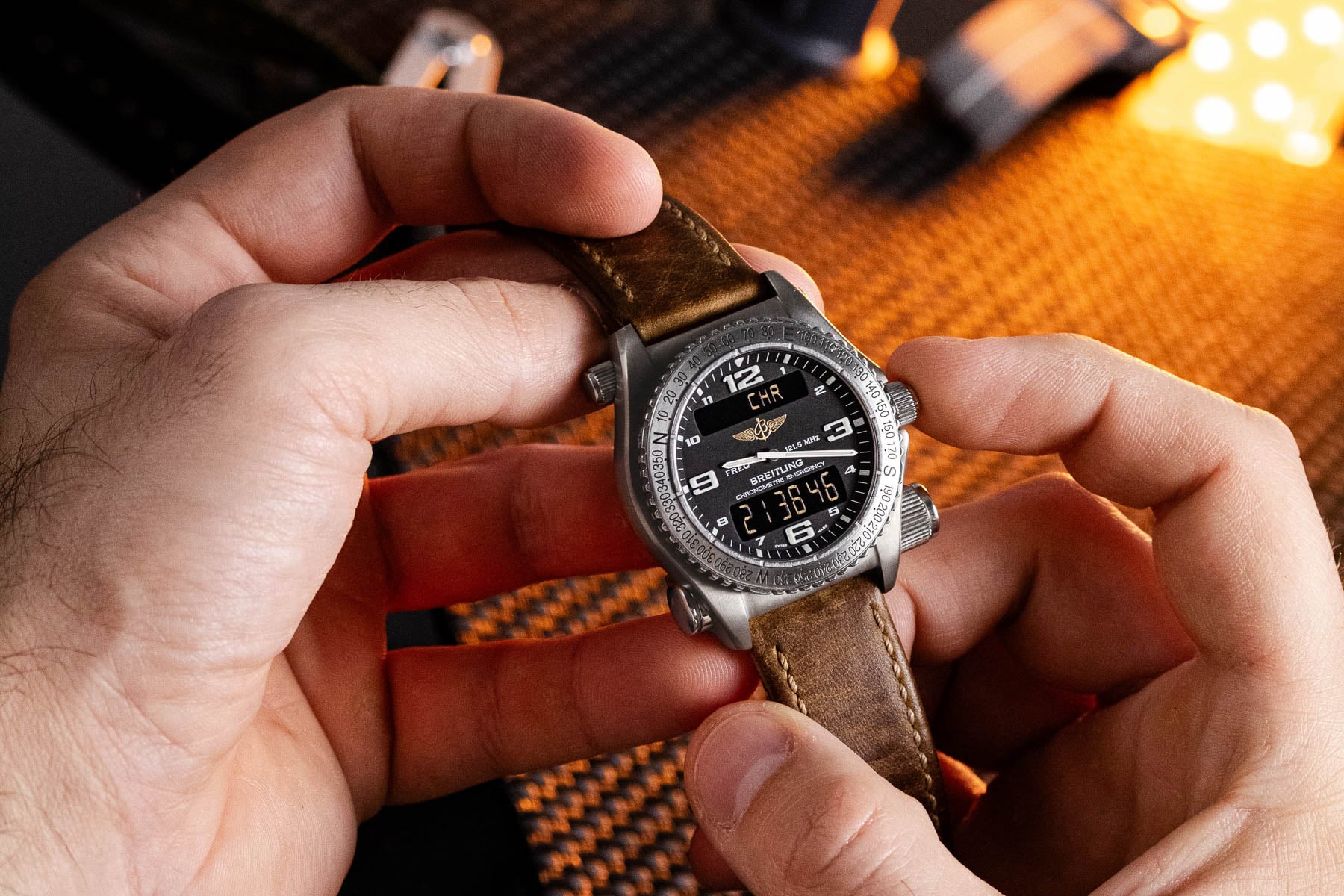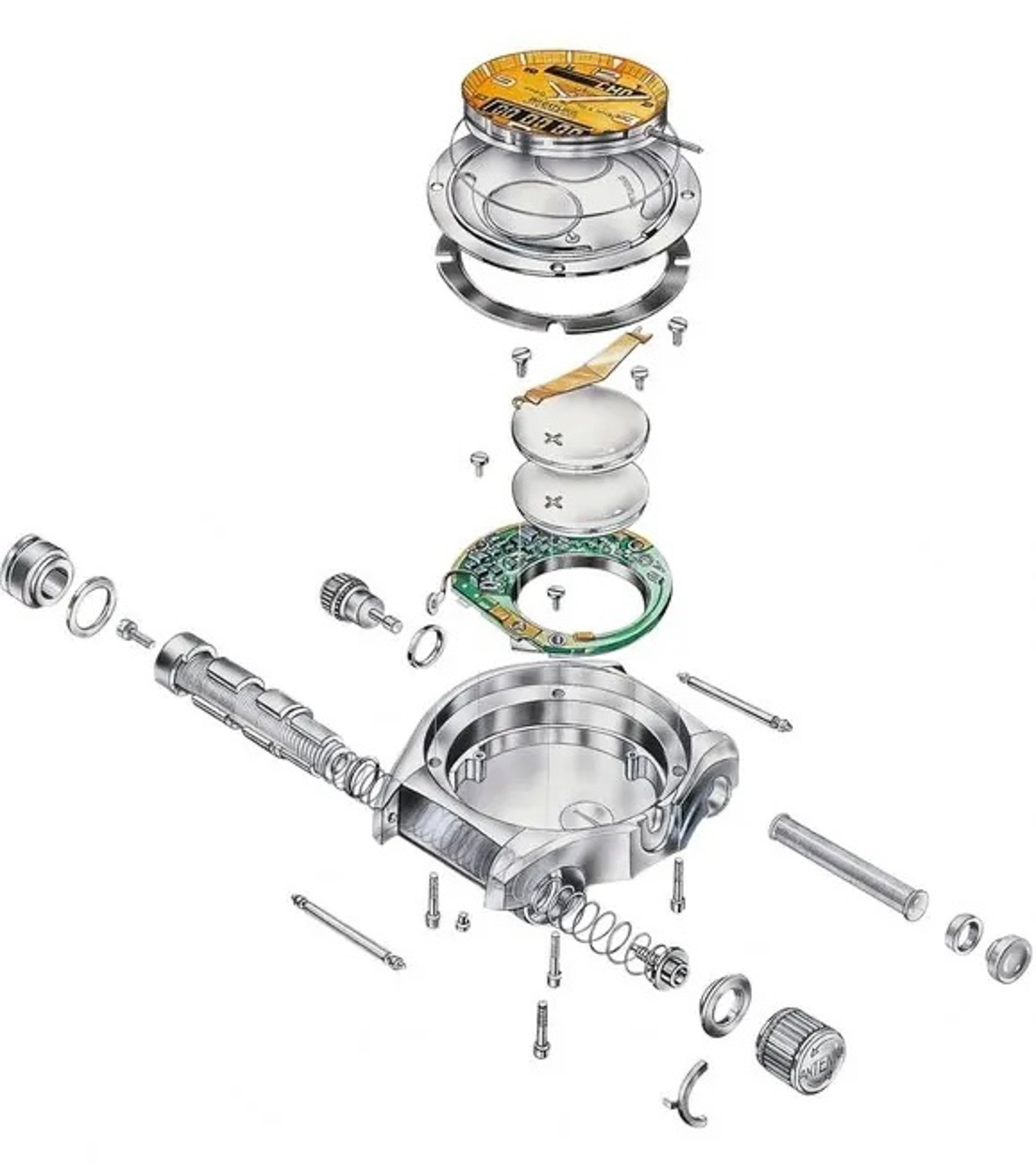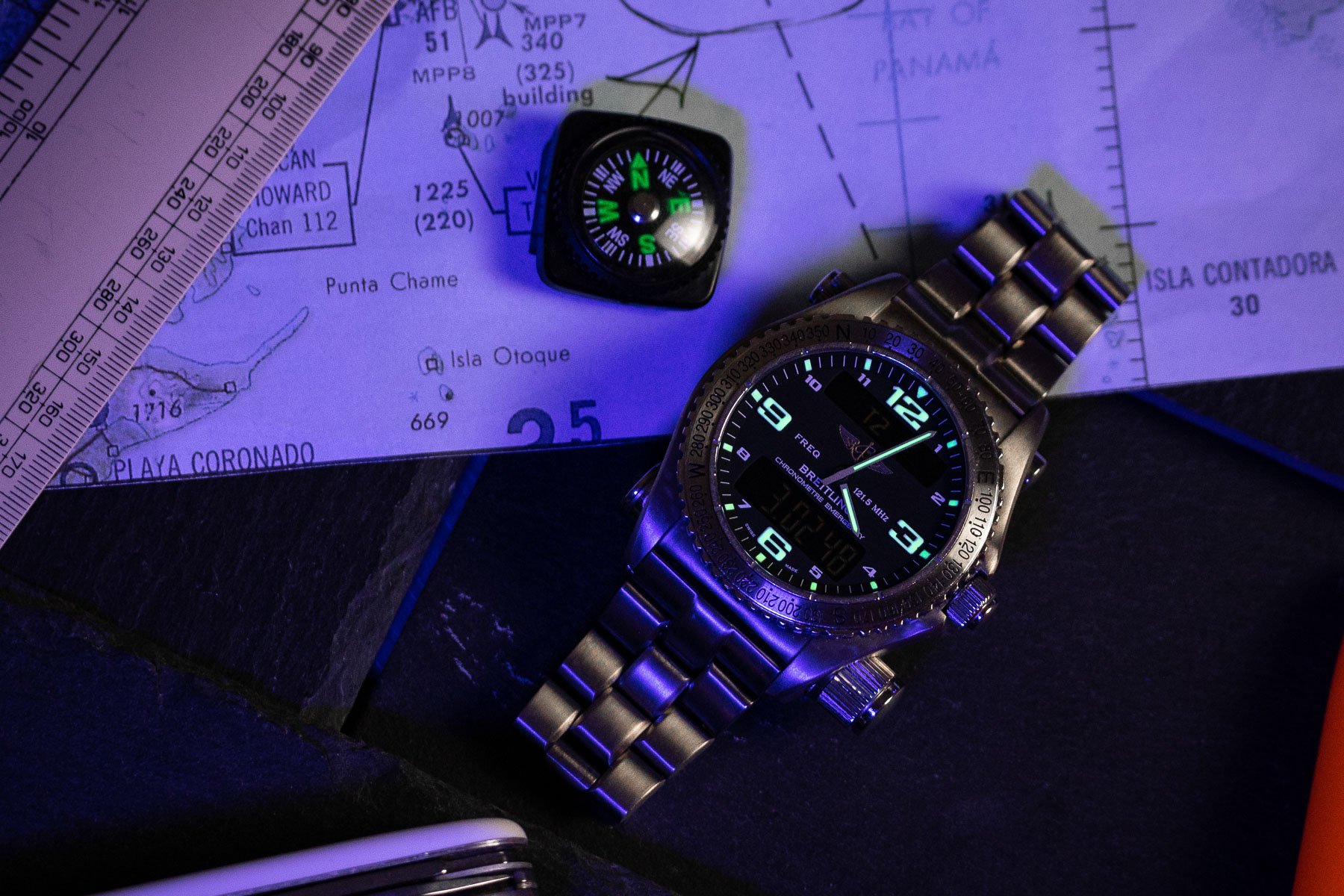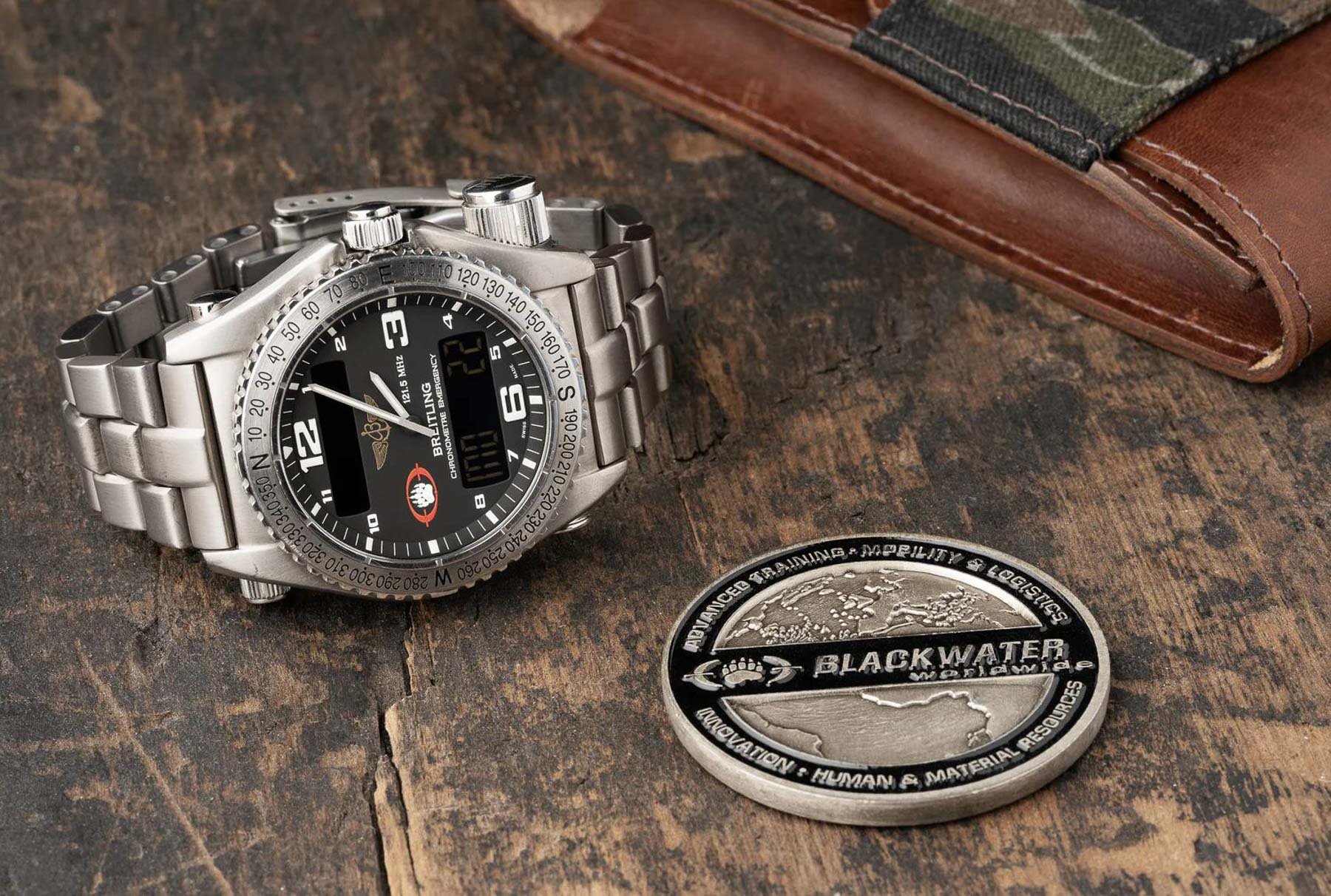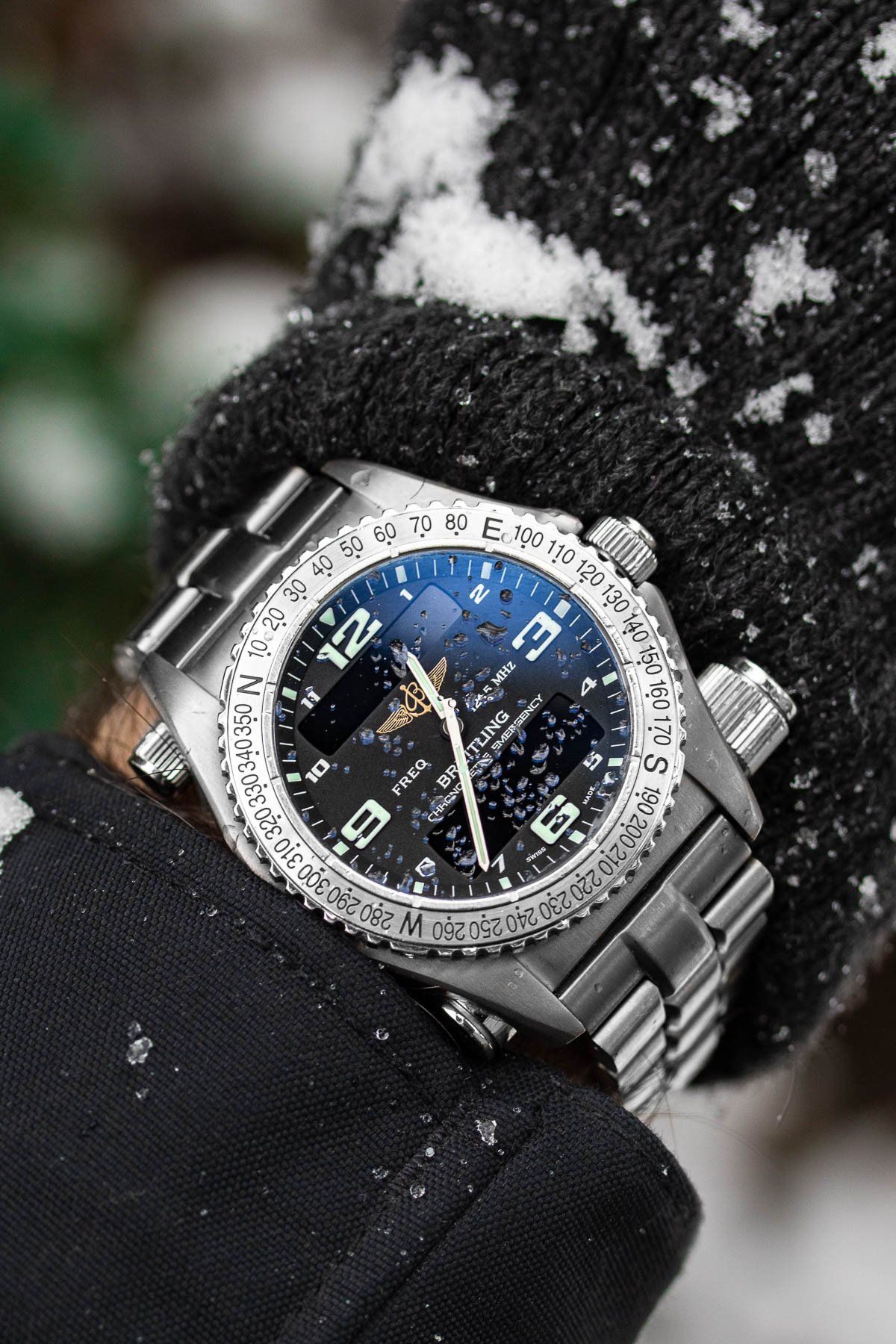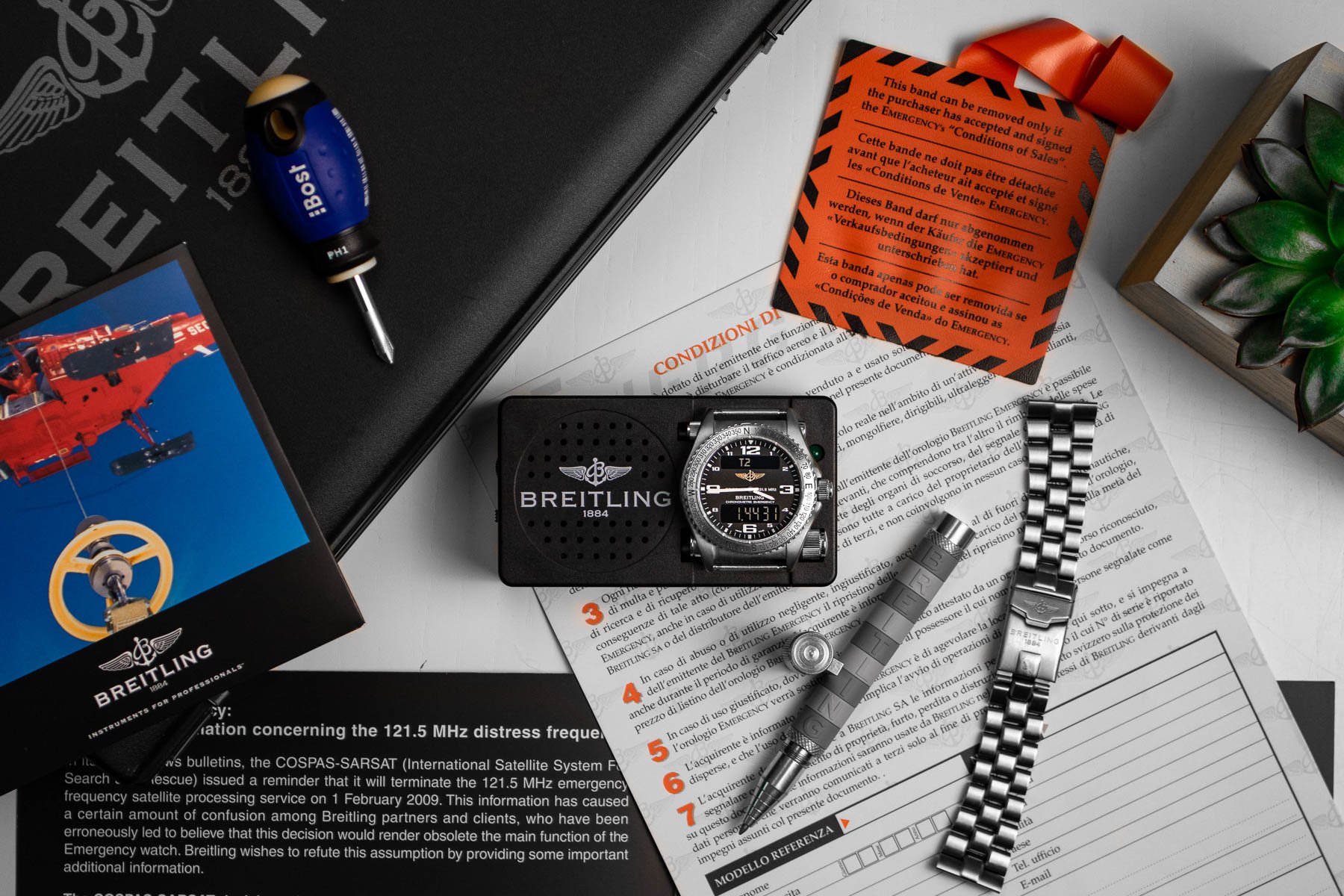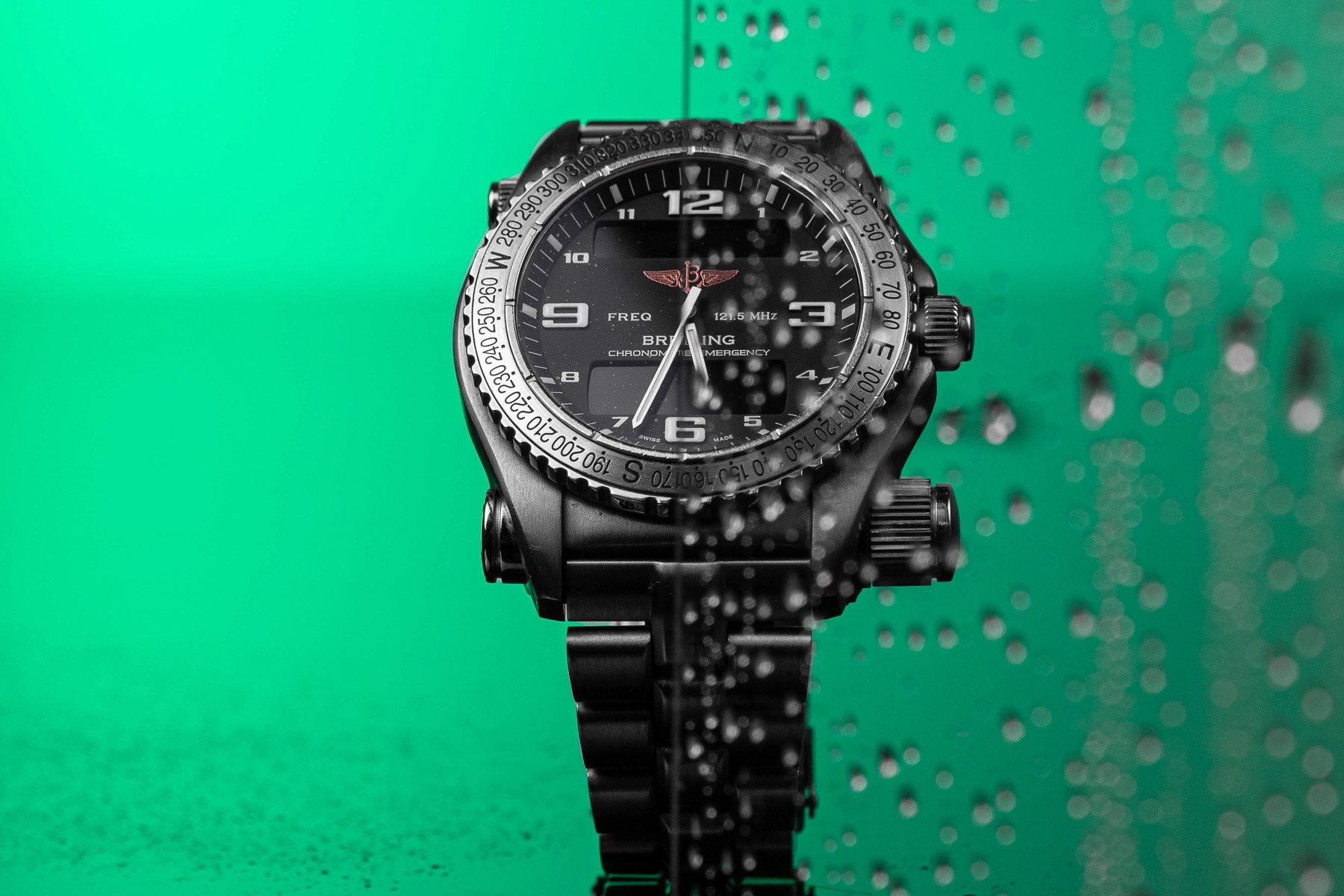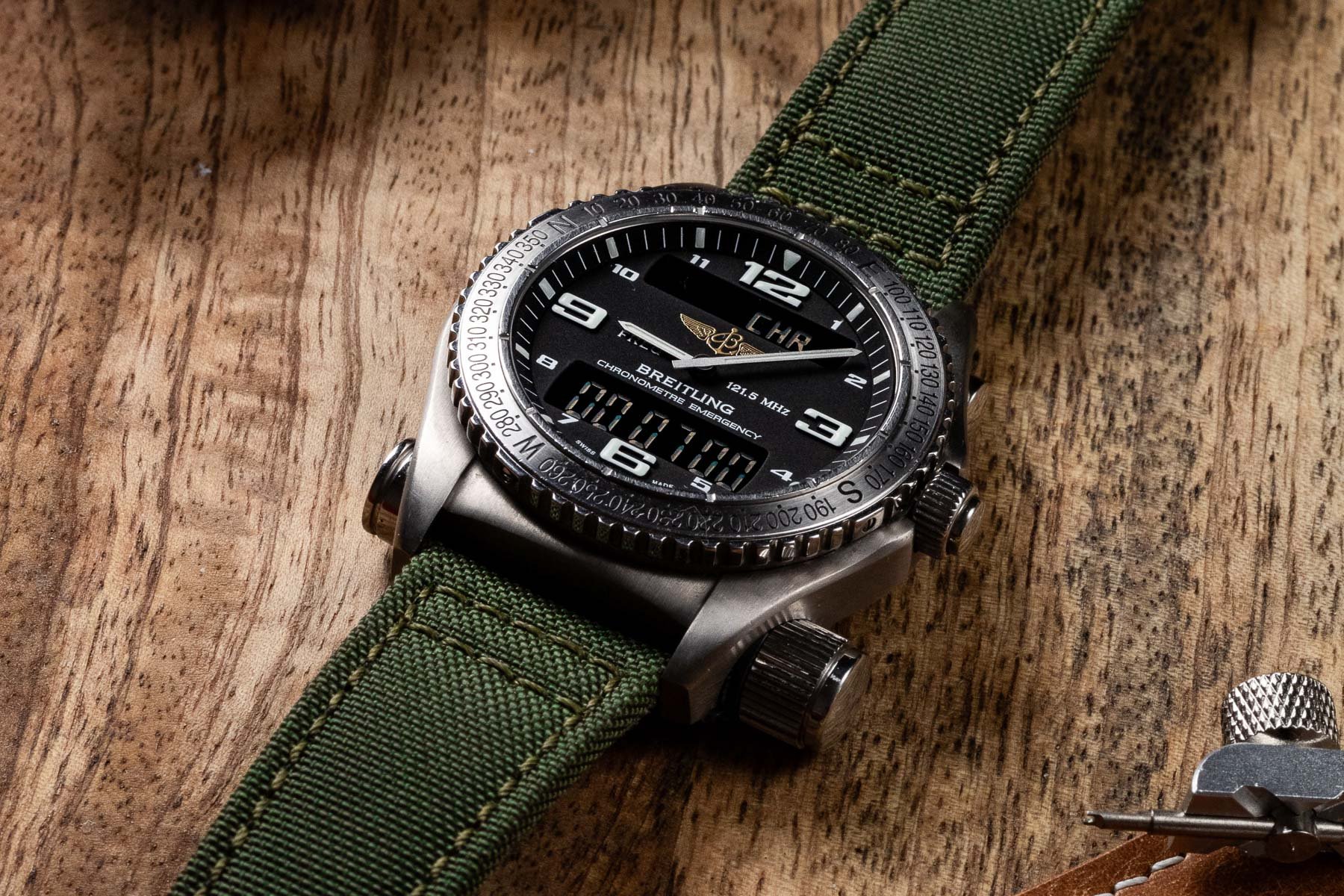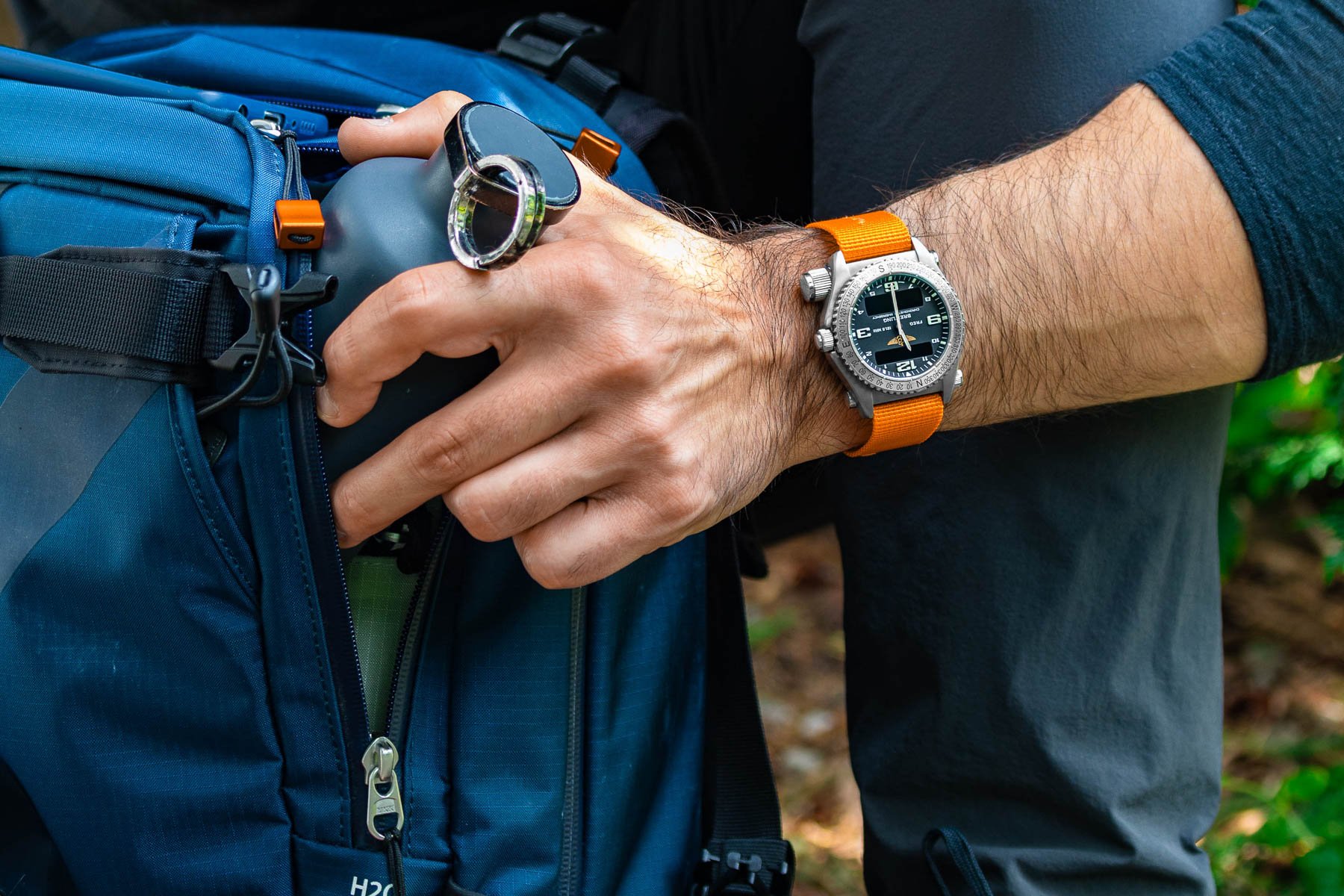A Close Look At The Breitling Emergency — The Watch That Can Save Your Life
I am sure that anyone who has ever delved into the world of watches has dreamed of the romantic stories associated with certain models. In a way, these stories serve as a kind of “validation” for us to finally acquire that wristwatch we dream of, often observing it in photos on the internet or social media. Watches with unique stories or even some nonsensically attractive function often magnetically draw us in. It’s similar to when we choose a car — we fantasize about having more horsepower even if we don’t need it. Still, it feels better when there’s more…
Watches that inspire
How many proud Speedmaster owners have told anyone who will listen how that watch was the first on the Moon or how it played a crucial role in returning the Apollo 13 crew safely to Earth? As a watch enthusiast, you’ve probably also fantasized at least once about underwater adventures at great depths with a Rolex Submariner on your wrist. And of course, we mustn’t forget about James Bond. If you’ve ever worn an Omega Seamaster, surely you’ve imagined yourself as a secret agent, driving through Monte Carlo in an Aston Martin DB5 with the beautiful Eva Green in the passenger seat.
As someone who has been immersed in the watch world for a long time, I have been overwhelmed by fantasies. Yes, there was admiration for the Speedmaster and Submariner, but there is one watch that hasn’t left my mind for the past 15 years. It had long been the object of desire and fantasy but somehow always found itself in second place on my priority list until the moment to buy one was right. I’m talking about a watch that seems like more than just a mere device — the oversized analog-digital Breitling Emergency made of titanium with an integrated emergency locator. It might sound like a gimmick, but the problem with me is that I have a weakness for such gimmicks.
History and development
The story begins with Ernest Schneider, the gentleman who purchased the Breitling brand in 1979 at the peak of the Quartz Crisis that brought the Swiss watch industry to its knees. Thanks to Schneider and his influence on the new generation of Breitling watches, the brand began to slowly rise like a phoenix from the ashes. Schneider, an engineer by profession, was also a former officer in the Swiss Army and a pilot. As such, he focused mostly on aviation watches, for which the Breitling brand is most famous today. He was responsible for the development of the Aerospace model in 1985, and thereafter, various spinoff models followed, such as the B-1, Chronospace, and, of course, the Emergency.
In the mid-1980s, Schneider attended a NATO meeting on the use and unreliability of ELBs (Emergency Locator Beacons) and came up with the idea of developing a small secondary radio transistor that could serve as a locator in case a pilot crashed and became separated from the aircraft. Schneider tasked his engineers with developing such a transistor for a wristwatch. To accomplish this feat, Breitling closely collaborated with the French company Dassault to integrate the mentioned locator into the existing (and then completely new) Aerospace watch model.
Unveiling the Breitling Emergency
Several years later, after spending $7 million on development, Breitling finally unveiled the Emergency to the public in 1995. The emergency locator was designed to be activated after the antenna on the right side of the case was opened via the crown and extended to its full 60cm length. It would then emit a unique SOS signal on the emergency-designated frequency of 121.5 MHz (there was also a modified Emergency model operating at 243 MHz for military use). The emitted signal is receivable within a 167km radius, and because it is directional, emergency services can determine the person’s exact position by triangulating the signal.
Initially, the Breitling Emergency was only available to licensed pilots (military and commercial). Over the years, though, Breitling found a way to make the watch available to the general public. To purchase one, the buyer must sign a contract promising not to abuse the emergency locator. In the case of “accidental” activation, the buyer must bear all the rescue costs. Otherwise, Breitling will cover them, and the buyer will even receive a new Emergency watch at no additional cost.
Not an everyman’s watch
The cynics among us might say that the Emergency was a pure marketing move. But let’s be honest; there are far easier ways to promote and sell watches than investing millions of dollars into untested technology with an extremely limited target group of buyers and a high failure rate. That’s precisely why I love this watch and consider it one of the last “Mohicans” among tool watches that have emerged from this Swiss brand.
The original Breitling Emergency was on the market from 1995 to 2010. During that span, the brand produced approximately 40,000 units that saved several dozen lives. According to Breitling, there was not even a single false alarm. Although no one continuously monitors the emergency frequency of 121.5 MHz anymore (there is a much more precise digital system and a frequency of 406 MHz), commercial aviation and rescue services can still check it. If you announce your flight, expedition, or skiing off designated trails where there is a risk of avalanches, you will very likely be rescued in case of an emergency. In a way, this watch is like a pocket knife; it’s better to have it and not need it than to need it and not have it. In any case, it will certainly be better than writing an SOS signal with pebbles on a remote beach.
Three types of the Breitling Emergency
The Breitling Emergency was available in three main versions. Two had a titanium case and either a non-HEQ (High-End Quartz) analog-digital movement or a thermocompensated HEQ ana-digi caliber that was accurate to within 10 seconds per year. HEQ models had the “Chronometer” designation on the dial. There was also an analog-only version in stainless steel. Although the Emergency was initially available with basic black, blue, and striking yellow dials, Breitling also introduced a model with an orange one. The brand even made a version in 18K yellow gold, which was ideal for owners of private aircraft.
There is an impressive list of people whose lives were saved by the Breitling Emergency. In 2002, a Swiss military parachutist landed in mountainous terrain, injured his ankle, and became separated from his group. He activated his Emergency, and rescue services found him a few hours later. Two British adventurers, Steve Brooks and Quentin Smith, were found floating on a life raft in the Southern Ocean after attempting to fly a helicopter over the Drake Passage, from the top of South America to Antarctica. After entering a storm, the two had to land in the sea, put on survival suits, and try to activate their PLB (personal locator beacon) systems. Both PLBs were destroyed, but the two had an ace up their sleeves — the Breitling Emergency that ultimately saved them.
Rare and desirable models
Breitling achieved popularity with the Emergency model mostly thanks to three individuals. One was Bear Grylls, the TV presenter and adventurer who wears his distinctive model with a yellow dial in his episodes teaching survival techniques. The other two were Bertrand Piccard and Brian Jones, two pilots who, on March 1, 1999, set off with the goal of a nonstop flight around the world in the most technologically advanced helium-filled balloon at the time, Orbiter 3. Exactly 19 days, 21 hours, and 55 minutes after launch, the duo landed in Egypt on the same longitude from which they started, achieving their goal. Throughout the entire flight, the pilots wore the Breitling Emergency on their wrists. Thankfully, upon landing, the antennas remained securely within their titanium cases.
With a multitude of limited Aerospace and Emergency models bearing the emblems of military units, probably the most famous and sought-after version is the Blackwater Emergency. Blackwater started as a private training center for special and police units in the late 1990s. However, it quickly expanded as a private military branch of the CIA for special operations to meet the US government’s growing need for security, logistics, and training after the terrorist attacks of September 11th, 2001. There are reportedly 150 units of this model with the bear-paw logo inside the crosshair sight, the hallmark of Blackwater. Essentially, all Blackwater agents received the watch as basic equipment and an additional layer of protection if they found themselves behind enemy lines and needed to be located and extracted from the hot zone.
The technology of the Breitling Emergency
Although the appearance of the dial may be familiar and recognizable to you, one look at the case is enough to understand that this is not an ordinary watch. The Emergency has two main internal systems. One is the emergency locator, which consists of two antennas. Its lower (primary) one measures 60 centimeters long and is for activating the locator. The upper one, for use on uneven terrain, can increase the antenna’s range up to 160 kilometers. Then, of course, there’s the timekeeping module — in other words, the watch itself. Importantly, these two independent systems have separate power supplies. Therefore, if the timekeeping module is damaged due to impact, the emergency module continues to operate without interruption.
The timekeeping module has an analog-digital configuration. Thus, the hour and minute hands display local time, and two independent digital displays can show additional watch functions. These include a chronograph, a countdown timer, the date, an additional time zone, and an alarm. The wearer can access all of these functions through a single input — the crown at 3 o’clock. By turning the crown, one can set the watch to a certain mode. Pulling it out allows the user to adjust the function, and pushing it in sets it. It may seem that the watch would be simpler with two additional buttons. After a little bit of practice, however, it is very straightforward to use, and you realize that nothing is missing.
Beyond the watch itself
The Breitling Emergency is one of the few watches that, besides being visually impressive and attracting attention, comes with an equally impressive package of accessories. Each watch comes in a large plastic case with the Breitling logo and an internal warning inscription, “For Aeronautical Use Only.” It contains a radio tester to check the emergency locator’s functionality, a screwdriver, additional batteries, instructions in all major languages (on a VHS tape!), and a contract in at least six languages that the watch owner must sign saying that he or she will bear all financial responsibility if the emergency locator is misused (it goes without saying that this is not one of those watches you wear for a Saturday night out with friends).
A titanium titan
The shape of this old pilot’s watch is impressive. With a 43mm diameter and 15mm thickness, it certainly won’t win awards for elegance, especially with two bumps on opposite sides of the case containing antennas and probably the largest crown I’ve ever seen on a wristwatch, which screams “DO NOT TOUCH!” Although the temptation is great (even today), I somehow managed to resist the urge to call the emergency rescue guys to my apartment for a little chat.
The entire case and metal bracelet are made of brushed titanium. Although I don’t know the exact grade, almost everyone who has held the watch in their hands has commented that it is incredibly light. That is actually the bright spot of this model. Regardless of the case’s brawny dimensions, the small mass and very well-distributed weight keep the Breitling Emergency sitting comfortably on the wrist.
Legibility above all else
The dial is the area where Breitling simply shines. Although the watch can display a multitude of functions, I often prefer the clean look with the digital display turned off. The contrasting silver and brushed hands perfectly match the bright hour markers and large reference numerals at 12, 3, 6, and 9 o’clock. And besides the manufacturer’s logo and model name, you can even find the emergency frequency on the dial.
This extraordinary readability is achieved not only through an excellent layout of elements on the dial but also a sapphire crystal with perhaps the best antireflective coating I have ever experienced on a watch. Just imagine feeling like the crystal has disappeared and you could touch the hands with your fingers. It’s that great! The lume is surprisingly good as well, especially on a watch that is about to turn 20 years old soon. Aviation watches are generally not known for the intensity and durability of their lume (unlike dive watches), but the thick layer of green “old school” luminous material is still legible in conditions that make it harder to read the time.
Final thoughts
After all that excitement about the Breitling Emergency, I must admit that the best feature is also the least tangible despite its usefulness (and potential uselessness). When I recently showed this watch to someone, the person said to me, “It looks like something a special forces member would wear.” And indeed, that’s how it appears, packed with digital displays, buttons, and protrusions. At first glance, you can see that it’s not another watch trying to copy the design of well-known models but that it stands out in the horological world as something original.
Wearing this watch, I feel a little braver, a little more adventurous, and a little more inclined to plan new challenges and travels. Does that mean I’ll embark on adventures that could be considered riskier? Probably not; common sense still prevails. However, in case fate leads me in that direction, at least I have solace in the fact that help is just one turn of that huge crown on the right side of the case away.
Editor’s note:
Thanks to Zvonimir Svalina (aka. @Portalsatova on Instagram) for this guest post.

